Avec les scooters sous-marins, les plongeurs se divisent souvent en deux camps : ceux qui n'en possèdent aucun, et ceux qui en possèdent neuf. Ce n'est pas qu'une blague. Le plongeur « neuf scooters » les trouve tellement indispensables qu'il les cache à des spots clés pour explorer d'immenses épaves en une seule bouteille. Cela met en lumière le débat central : ces machines sont-elles des outils révolutionnaires, ou sont-elles — comme le camp « zéro scooter » le croit implicitement — juste des charges coûteuses et à haute maintenance ? La vraie question est : comment déterminer dans quel camp vous vous situerez ?
Avantages des scooters sous-marins : pourquoi quelqu'un en posséderait neuf
Qu'est-ce qui transforme un scooter sous-marin d'un « fardeau à haute maintenance » en un « outil révolutionnaire » que quelqu'un achèterait en neuf exemplaires ? La réponse n'est pas seulement « amusant ». C'est un ensemble de avantages puissants et pratiques qui, pour la bonne personne, changent fondamentalement ce qui est possible lors d'une plongée.
1. Réduisez drastiquement votre consommation d'air
C'est le bénéfice le plus important pour les plongeurs sous-marins. En remplaçant le palmage intense par un moteur, votre effort physique diminue considérablement. Cela réduit directement votre consommation d'air (SAC), permettant à votre bouteille de durer beaucoup plus longtemps et prolongeant votre temps de plongée sans décompression.
2. Combiner deux sites de plongée en un seul voyage
Un DPV étend considérablement votre portée effective. Des sites qui nécessitaient auparavant deux plongées distinctes — comme une épave importante et un système de récifs voisin — peuvent souvent être entièrement explorés en une seule plongée. C'est particulièrement vrai pour les plongées depuis la côte, transformant une nage de 300 mètres jusqu'à la pente en un trajet de deux minutes.
3. Aller plus vite avec moins d'effort
Au-delà du simple frisson, un scooter aquatique offre une vitesse fonctionnelle. Vous pouvez utiliser un réglage de croisière lent à 1 m/s (2,2 mph) pour scanner soigneusement un récif ou passer à une vitesse supérieure (comme les 2 m/s, ou 4,5 mph, du Sublue Navbow) pour atteindre rapidement votre prochain point d'intérêt, tout en vous fatiguant à peine.
4. Rendre la plongée accessible à plus de personnes
Pour les personnes ayant une endurance limitée, une faible force de nage ou des difficultés de mobilité physique, un scooter de mer est un puissant égalisateur. Il fournit la propulsion nécessaire pour leur permettre de participer confortablement et en toute sécurité à l'exploration sous-marine avec leurs amis et leur famille.
5. Surmonter les courants épuisants
Nager contre un courant même faible épuise votre énergie et votre réserve d'air à un rythme alarmant. Un scooter fournit la poussée constante et fiable nécessaire pour traverser des courants modérés, vous aidant à respecter votre plan de plongée et à revenir à votre point de sortie sans lutte épuisante.
Inconvénients des scooters sous-marins : pourquoi ils sont un « refus catégorique » pour certains
Les avantages sont tentants, mais ils s'accompagnent de compromis importants et concrets. Ce sont les contraintes pratiques et les nouveaux dangers qui font hésiter la plupart des plongeurs — le camp des « zéro-scooter ».
1. Coûts élevés d'achat & de batterie
Un DPV fiable pour la plongée en eau libre est coûteux, souvent à partir de plus de 1 000 $. Cela n'inclut pas le coût élevé de son principal consommable : la batterie. Quelques années plus tard, une seule batterie de remplacement officielle peut être étonnamment chère, coûtant parfois autant qu'un nouveau scooter d'entrée de gamme.
2. Restrictions de voyage aérien & encombrement
C'est le plus grand obstacle logistique. Les scooters sous-marins sont lourds et encombrants à transporter (allant de 4,5 kg à plus de 8,5 kg). Pire encore, leurs grosses batteries lithium-ion sont interdites dans les avions de ligne. Cela vous oblige soit à trouver un modèle avec des batteries plus petites, amovibles et conformes aux règles des compagnies aériennes, soit à le laisser à la maison.
3. Durées de fonctionnement limitées & planification de plongée
La durée de vie de la batterie est limitée et chute rapidement à haute vitesse (par exemple, passant de 60 minutes à basse vitesse à seulement 18 à haute vitesse). Vous devez planifier votre plongée en fonction de votre batterie, en réservant assez d'énergie pour le retour et les urgences. Lorsqu'elle est déchargée, elle devient un objet lourd que vous devez remorquer.
4. Entretien quotidien rigoureux
Comme un détendeur, un scooter de mer nécessite un entretien. Il doit être soigneusement rincé à l'eau douce après chaque plongée pour éviter que le sel et le sable n'endommagent les joints et le moteur.

Qui devrait réellement acheter un scooter sous-marin ?
Alors, comment savoir si vous ferez partie du camp des fanatiques des "neuf scooters" ou des "zéro scooter" pleins de regrets ? Cela dépend entièrement de vos besoins principaux. Différents utilisateurs nécessitent des machines complètement différentes.
Le snorkeleur occasionnel / famille
Besoins principaux : Plaisir sûr et facile à utiliser en surface.
Caractéristiques principales : Un prix plus bas, des protections d'hélice solides pour la sécurité, des commandes simples (souvent une seule vitesse), et une flottabilité positive pour que l'appareil flotte si vous le lâchez.
Le plongeur récréatif & apnéiste
Besoins principaux : Explorer efficacement les récifs ou épaves dans les limites récréatives.
Caractéristiques principales : Une bonne profondeur maximale (par exemple, 40m / 131ft), une flottabilité quasi neutre pour planer facilement, plusieurs réglages de vitesse, et une batterie fiable. C'est la catégorie équilibrée "polyvalente" (par exemple, Sublue Navbow).
Le photographe/vidéaste sous-marin
Besoins principaux : Mouvement fluide et stable pour un tournage stable, avec une main libre.
Caractéristiques principales : Flottabilité neutre parfaite, supports intégrés pour caméra, et une option de contrôle à une main (comme le kit DTC) pour libérer l'autre main pour les réglages de la caméra.
L'enthousiaste de haute performance
Besoins principaux : Vitesse et puissance maximales.
Caractéristiques principales : Un moteur à haute poussée (par exemple, 21kgf / 46lbf), des vitesses maximales de plus de 6 mph, et des fonctionnalités avancées comme un écran LCD affichant la vitesse et les données de batterie (par exemple, Sublue Vapor).
Le plongeur technique & spéléo
Besoins principaux : Fiabilité extrême et capacité longue portée pour environnements dangereux.
Caractéristiques clés : Modèles "bêtes de somme" avec construction métallique robuste, conceptions tolérantes aux pannes, autonomies très longues et batteries haute capacité échangeables. Pour ce groupe, un DPV est un équipement de mission critique, pas un jouet.

Tranchez votre débat "0 ou 9" !
Le verdict "en vaut-il la peine" n'est pas universel. Un scooter est un outil puissant, mais qui exige un réel engagement en termes de coût, de logistique de voyage et de formation à la sécurité. Pour l'utilisateur occasionnel, c'est un luxe amusant ; pour le plongeur sérieux, c'est un changement de jeu si les avantages compensent les lourdes contraintes. Le propriétaire du "neuf-scooters" a simplement décidé que pour ses besoins spécifiques, le compromis en valait la peine. La décision finale repose sur votre réelle préparation à faire de même.
FAQ sur les scooters sous-marins
Q1 : Les scooters sous-marins valent-ils la peine d'être essayés ?
Oui, absolument. Pour la bonne personne, c'est un outil révolutionnaire. Pour les plongeurs sérieux, ils prolongent le temps au fond et permettent d'explorer de vastes zones inaccessibles uniquement avec des palmes. Pour les snorkelers occasionnels, ils ajoutent beaucoup de plaisir et une exploration sans effort lors d'une journée à la plage. Bien que la logistique de possession soit complexe, l'expérience d'utilisation est presque universellement considérée comme valable.
Q2 : Ai-je besoin d'une formation spéciale pour utiliser un DPV en plongée sous-marine ?
Oui. Bien qu'un sea scooter soit simple à utiliser pour le snorkeling en surface, en utiliser un en profondeur introduit de nouveaux risques et nécessite de nouvelles compétences. Vous devez apprendre à gérer votre flottabilité en mouvement, éviter une remontée rapide dangereuse et gérer les pannes potentielles comme un moteur incontrôlable. Un cours de certification spécialisé (comme le cours DPV de PADI) est essentiel pour tout plongeur sous-marin.
Q3 : Comment puis-je voyager en avion avec mon scooter sous-marin ?
C'est le plus grand défi logistique. La plupart des compagnies aériennes interdisent les grosses batteries lithium-ion (généralement celles de plus de 160Wh) dans tous les bagages. Votre seule option est d'acheter un scooter spécialement conçu pour le voyage, qui dispose de batteries plus petites et amovibles (souvent en dessous de 100Wh) que vous devez transporter dans votre bagage à main. Vérifiez toujours la politique spécifique de votre compagnie aérienne avant de prendre l'avion.
Q4 : Que se passe-t-il si je lâche mon scooter sous l'eau ?
Cela dépend entièrement de la flottabilité du modèle. Les scooters conçus pour le snorkeling occasionnel ont généralement une flottabilité positive, ce qui signifie qu'ils flottent à la surface. La plupart des DPV avancés pour la plongée sous-marine sont conçus pour être neutres ou légèrement négatifs en profondeur. Cela permet au plongeur de "garer" le scooter (par exemple, en l'accrochant à un anneau en D) afin qu'il reste en suspension, laissant les mains libres.

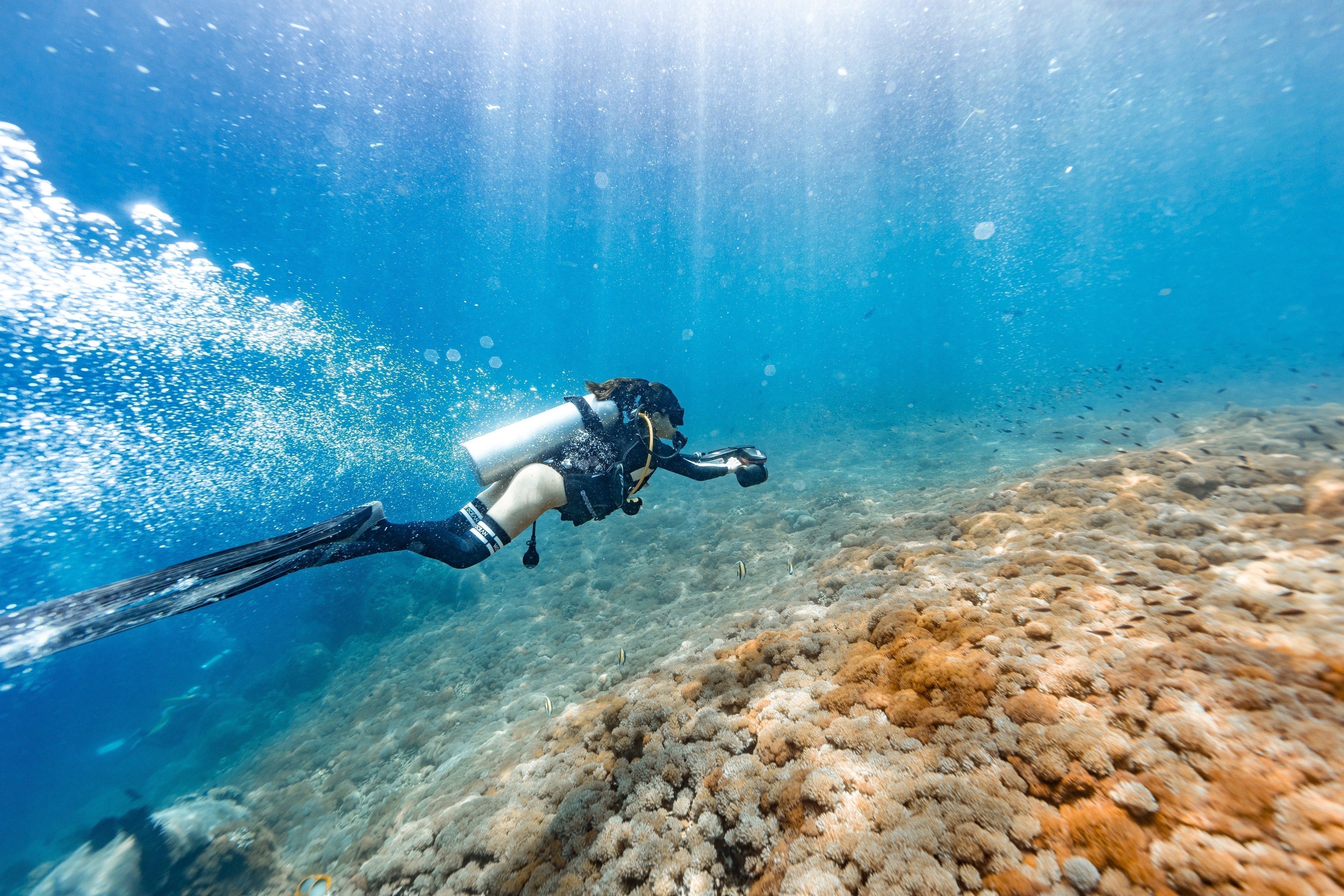


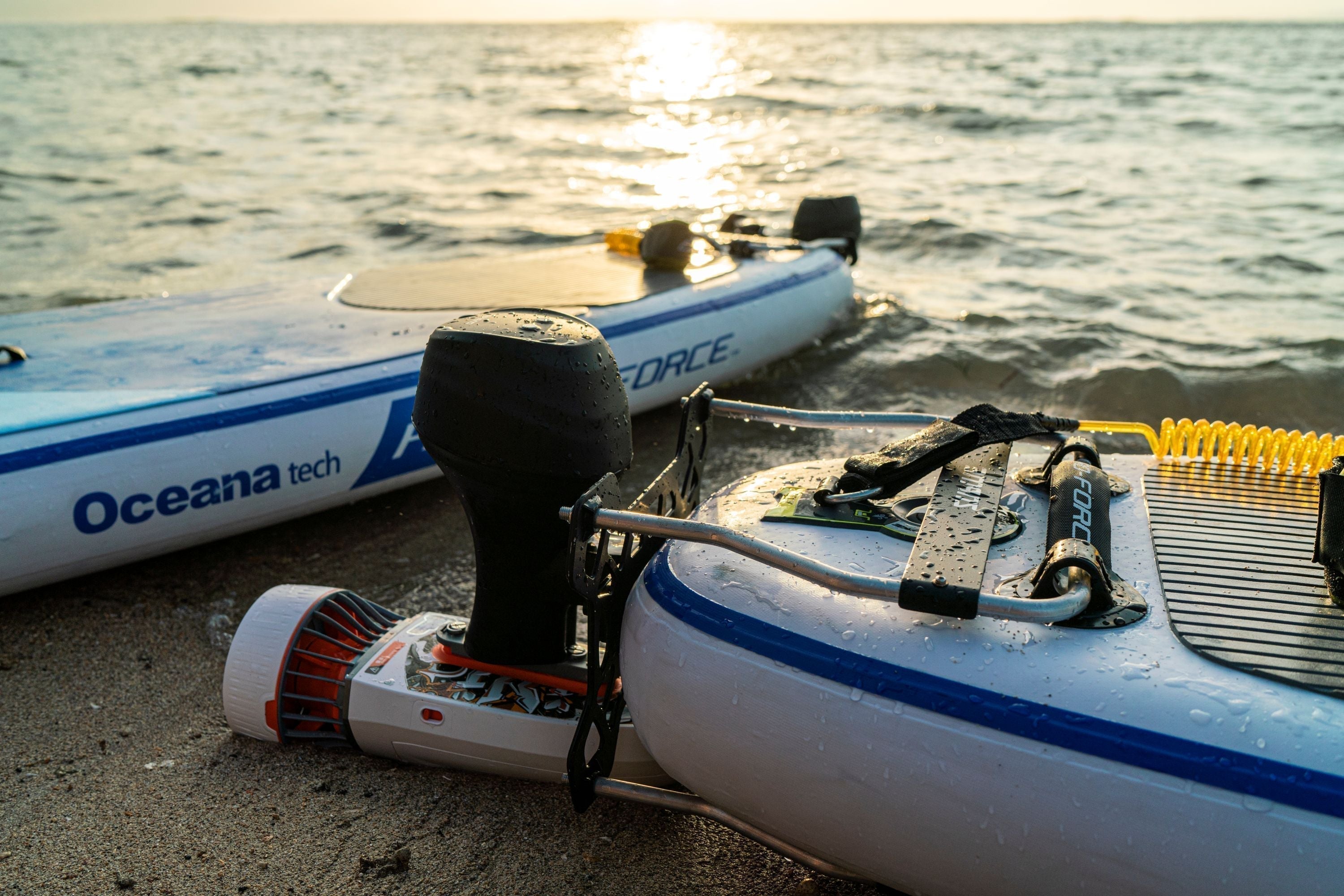
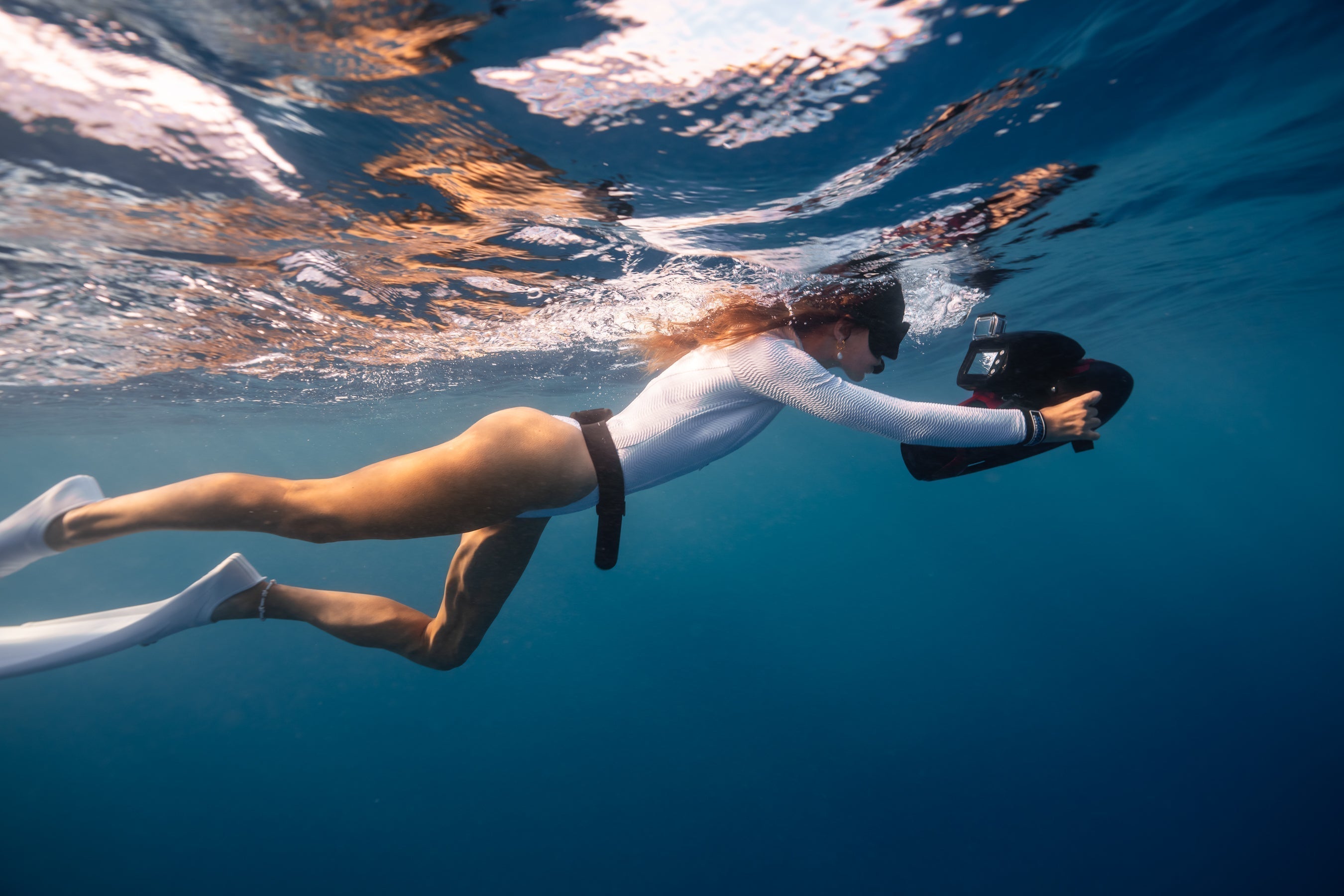


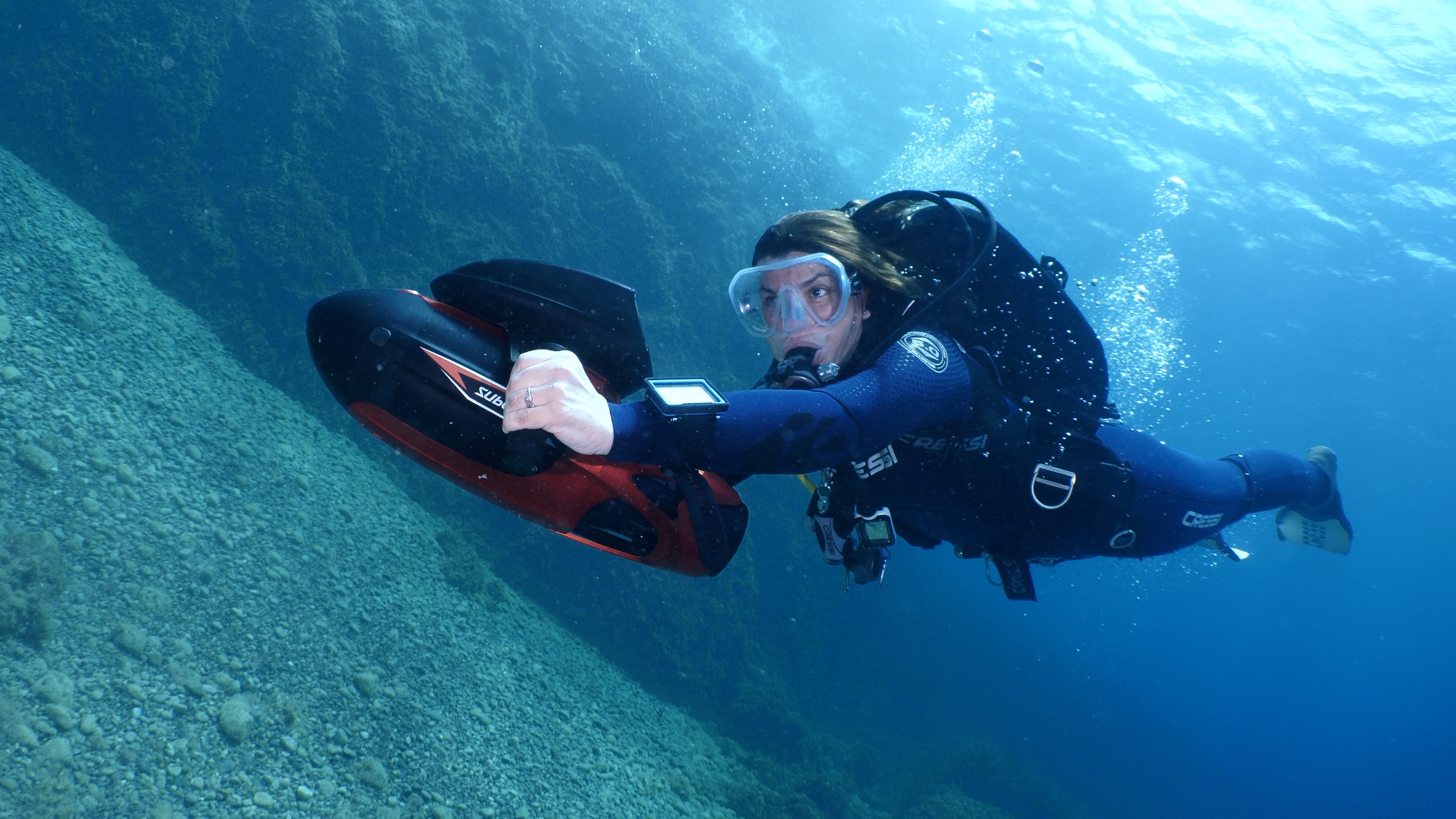
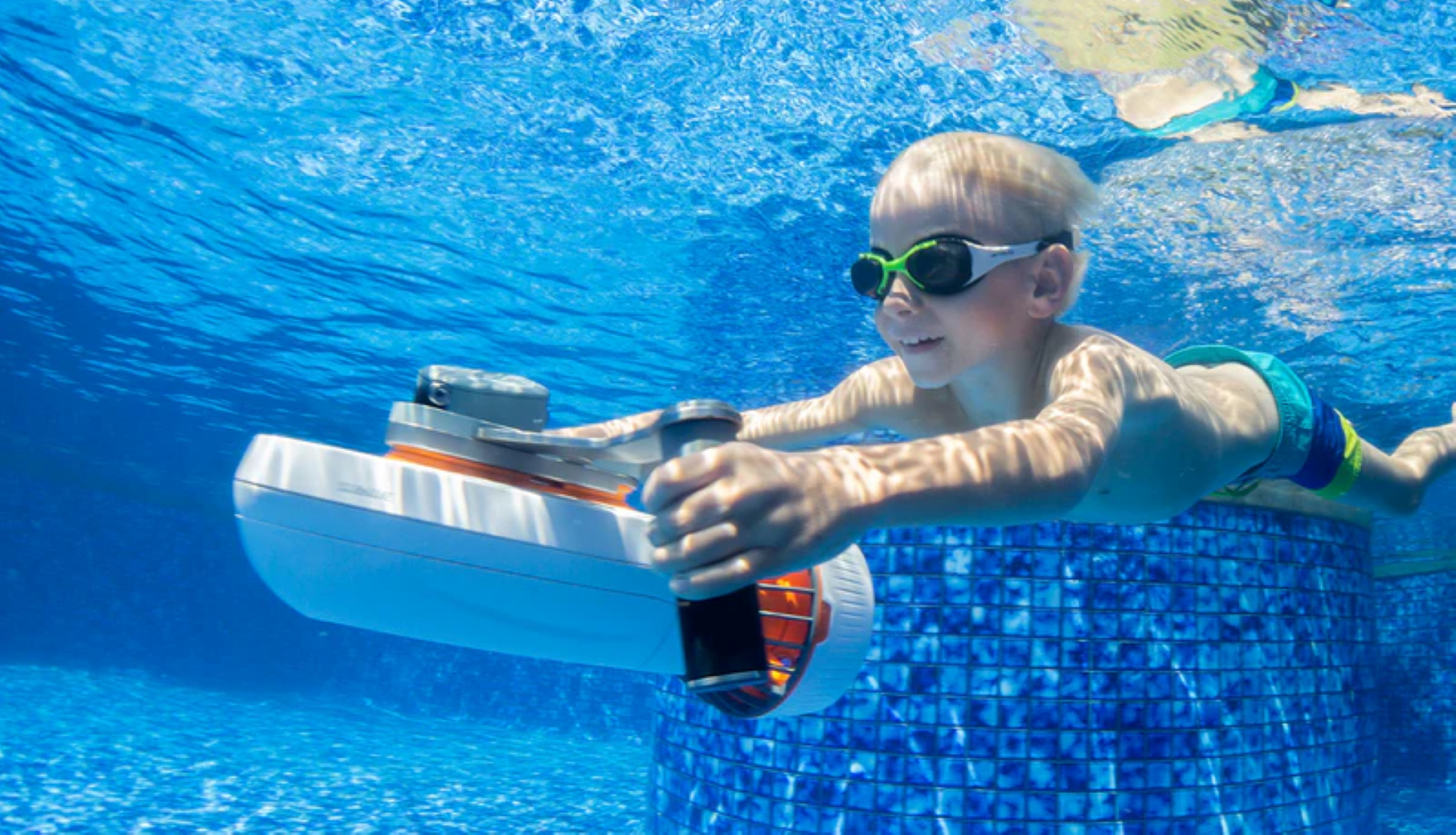
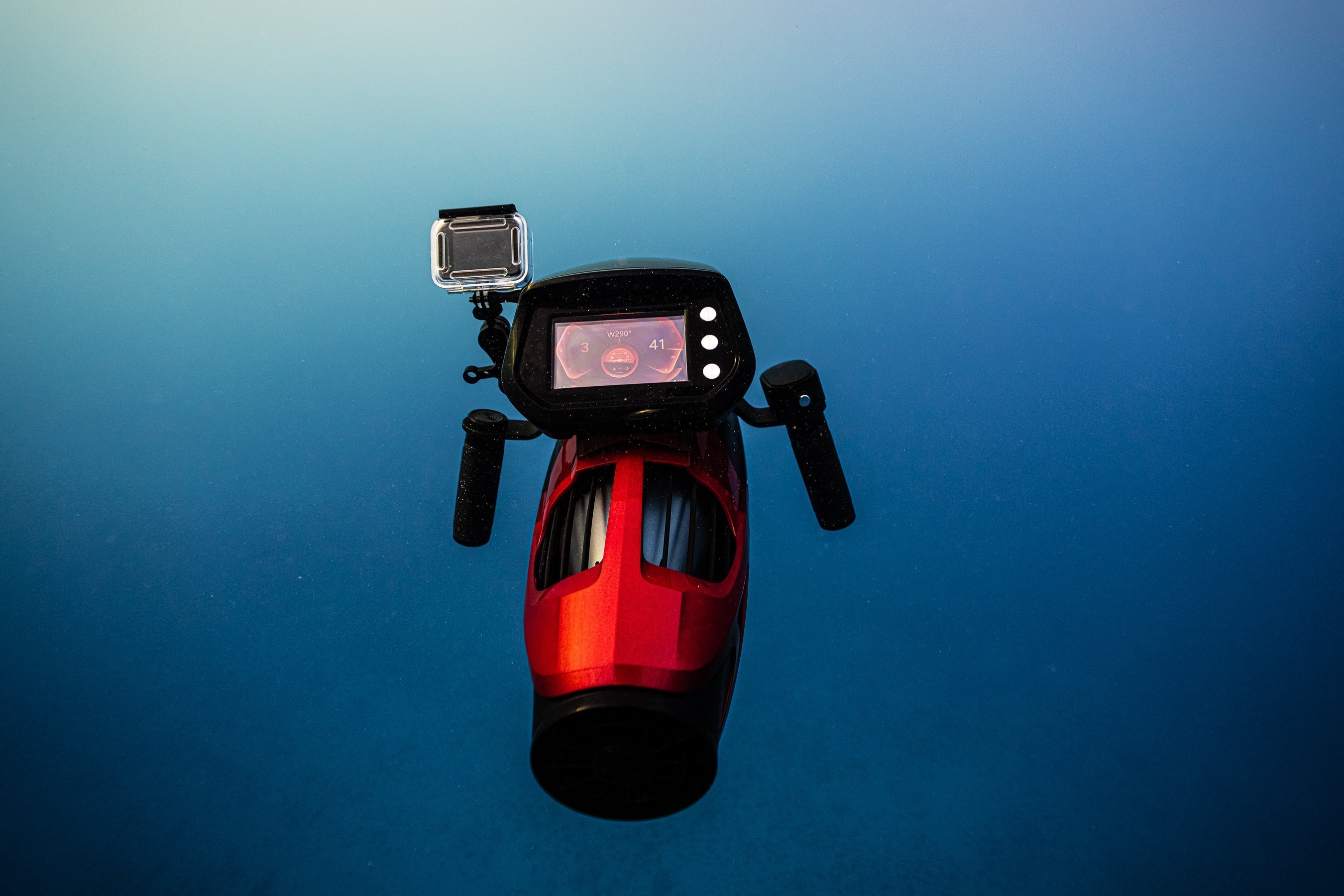
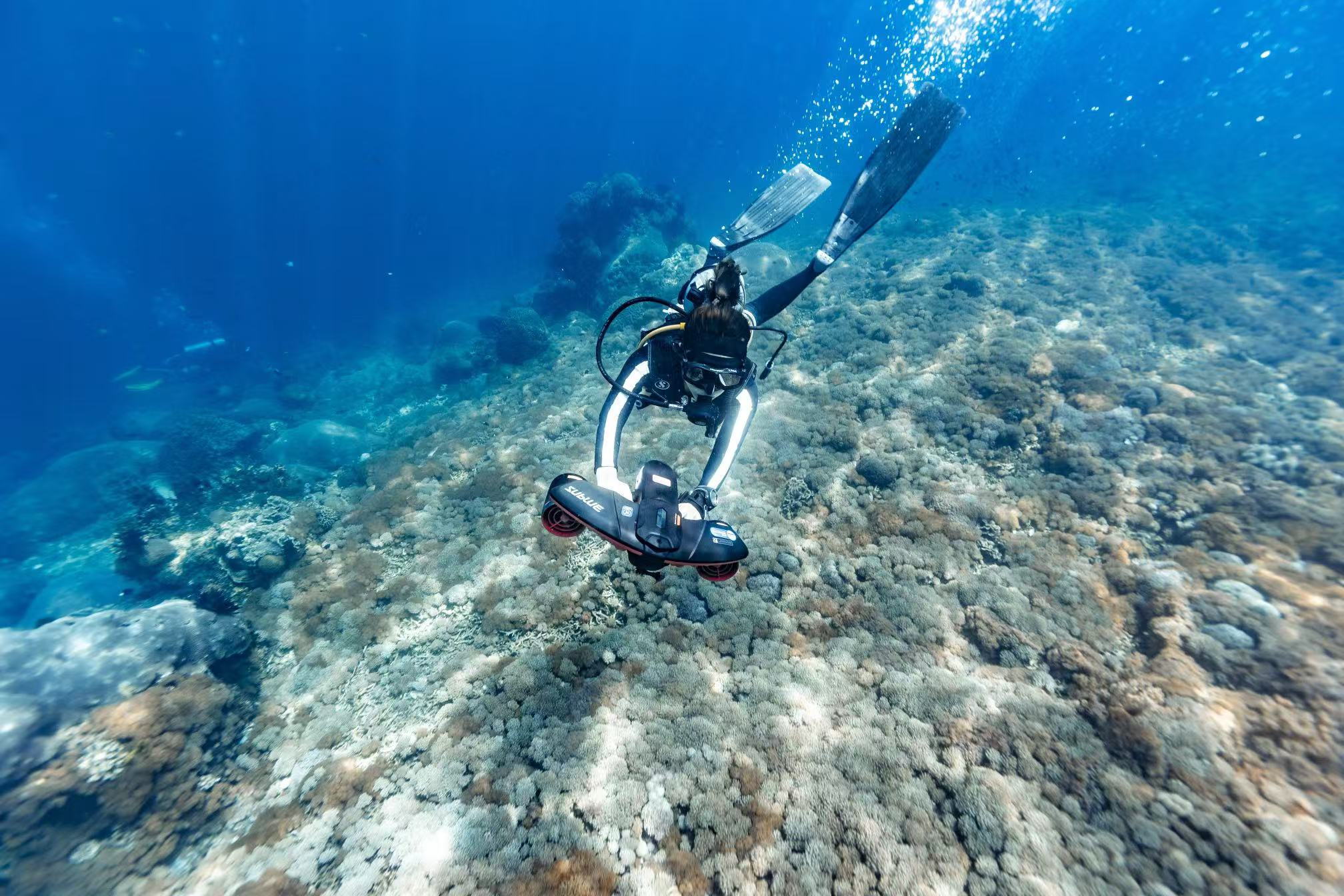
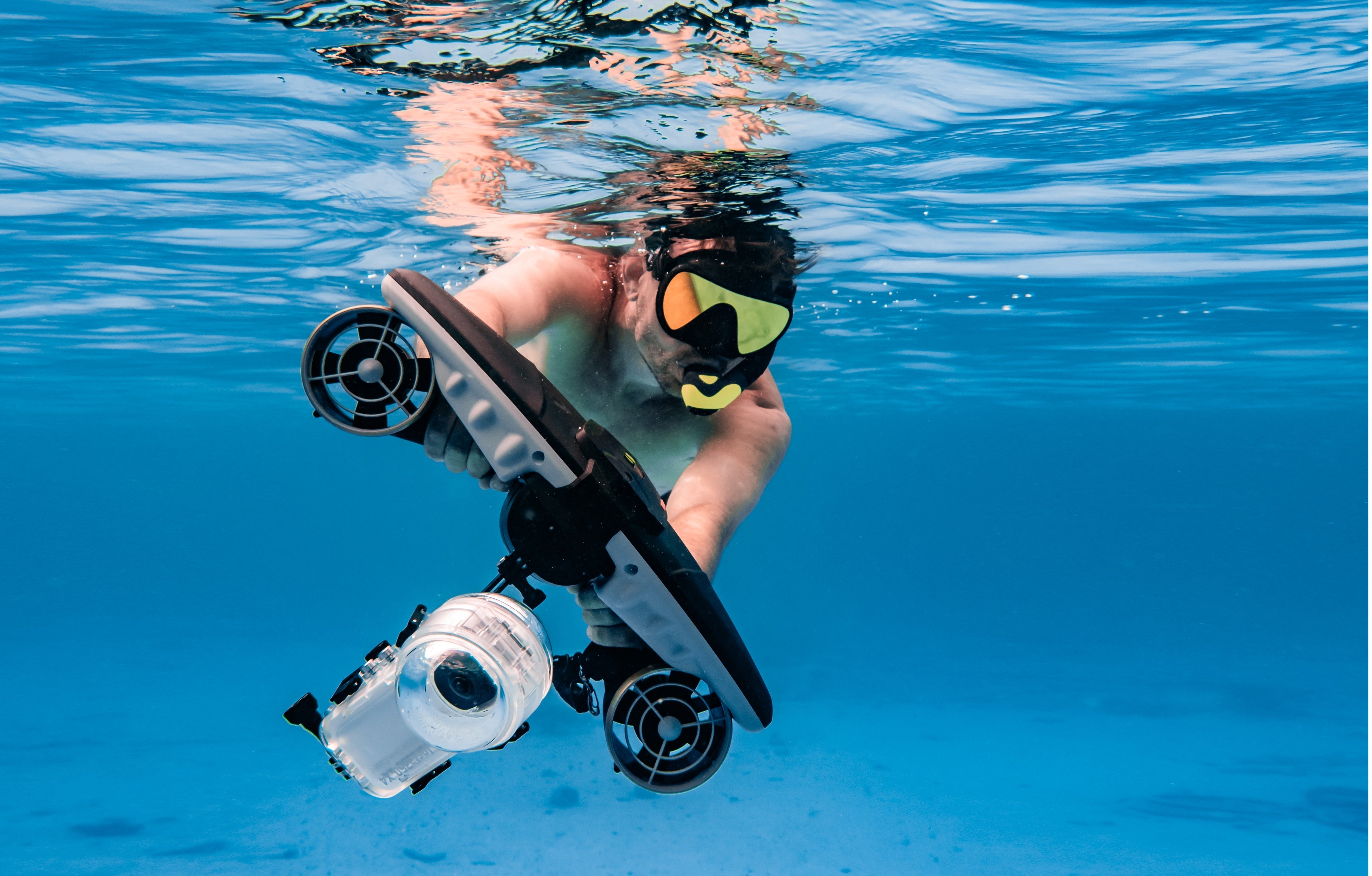


Partager:
Quelles sont quelques-unes des activités nautiques incontournables à essayer pour les enfants ?
Scooter sous-marin "Thrust" : Plus grand est-il toujours mieux ?